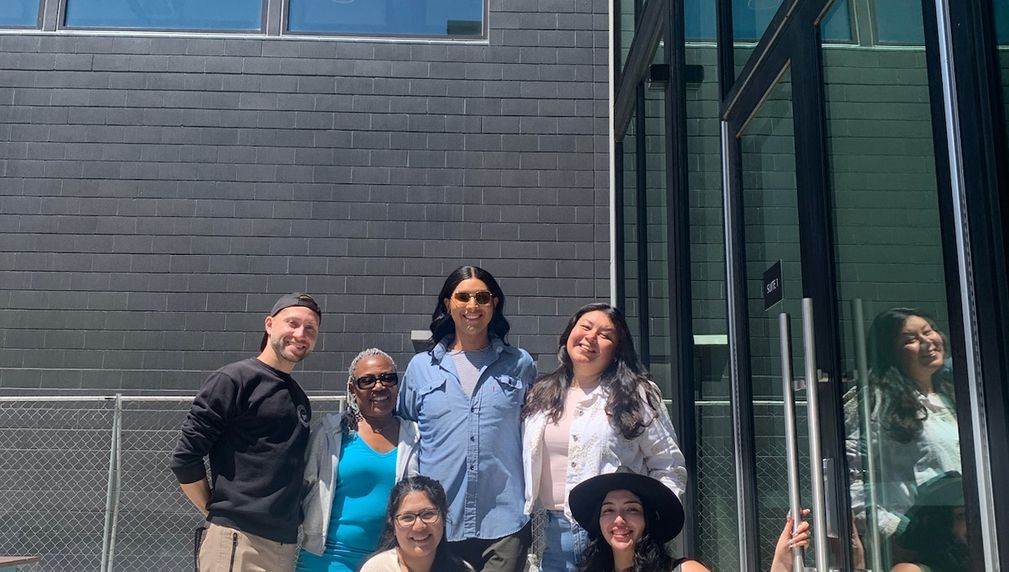Community in Motion
Community in Motion is a community-driven program transforming access to mental health care for undocumented, disabled, and housing insecure Angelenos. We use collective movement as medicine to support connection, trust, and belonging. Beginning with salsa and bachata, our program events are hosted in a mental health space where bilingual providers and community members come together in shared experience—drawing on cultural practices that reduce stigma, create urgently needed pathways into care, and can be adapted across communities.

What is the primary issue area that your application will impact?
Health care access
In which areas of Los Angeles will you be directly working?
South LA
In what stage of innovation is this project, program, or initiative?
Pilot or new project, program, or initiative (testing or implementing a new idea)
What is your understanding of the issue that you are seeking to address?
Undocumented, disabled, and housing insecure Angelenos face systemic barriers to mental health care, including cost, language access, fear of institutions, and deep stigma. Even when care is available, it is often short-term, impersonal, or disconnected from culture. One issue therapists understand well is that building rapport—a critical foundation for effective care—takes time, consistency, and trust, especially with marginalized populations who have been harmed or ignored by traditional systems. Research published in The BMJ (2024) found that group-based dance is one of the most effective treatments for depression. Community in Motion addresses these intersecting issues by creating a consistent, joyful, culturally grounded space where healing relationships can form. Therapists participate as learners alongside community members, modeling shared vulnerability and building trust that can carry into long-term care.
Describe the project, program, or initiative this grant will support to address the issue.
Community in Motion is a community-driven program that transforms access to mental health care by returning to what has historically kept our communities well: joy, movement, connection, and culture. The program uses cultural dance not only as joyful movement but as an evidence-based therapeutic tool and trust-building strategy, rooted in ancestral practices. We offer a consistent and culturally affirming space where undocumented, disabled, and housing insecure Angelenos can build relationships with bilingual medical professionals that share lived experience with the participants over time.
Events are held at our mental health office in partnership with a bilingual queer-led dance academy. Events are bilingual and accessible, and all participants receive full scholarships to reduce financial, institutional, and emotional barriers to care. What makes this model distinct is how mental health professionals are involved—not as observers or experts, but as fellow dancers. Providers participate in the program alongside community members, sharing space and vulnerability. This helps reduce fear, break down hierarchies, and make therapy feel safe, mutual, and human.
As participants return each week, trust grows not through paperwork or intake forms, but the way it always has—slowly, relationally, and with joy. This program opens a pathway to care that is rooted in culture, grounded in trust, and built to last.
Describe how Los Angeles County will be different if your work is successful.
If successful, Community in Motion will make mental health care in Los Angeles more local, personal, and trusted. Instead of relying on clinical settings that feel disconnected or inaccessible, we create healing spaces inside familiar cultural experiences—dance, music, community. By participating as learners, medical professionals build relationships rooted in shared humanity, shifting power and breaking down barriers that prevent people from seeking help. The program will operate weekly from a new therapy office that is sponsored by the LA County Office of Economic Opportunity's Launch Pad Project in South LA, creating infrastructure that lives beyond the grant. As visibility grows, both the dance academy and therapy office will be able to budget for the program’s ongoing costs, making it financially sustainable. Most importantly, this work will change how care is imagined: not as a service for the privileged, but as something joyful, culturally resonant, and meant for everyone.
Approximately how many people will be impacted by this project, program, or initiative?
Direct Impact: 9,360
Indirect Impact: 14,040